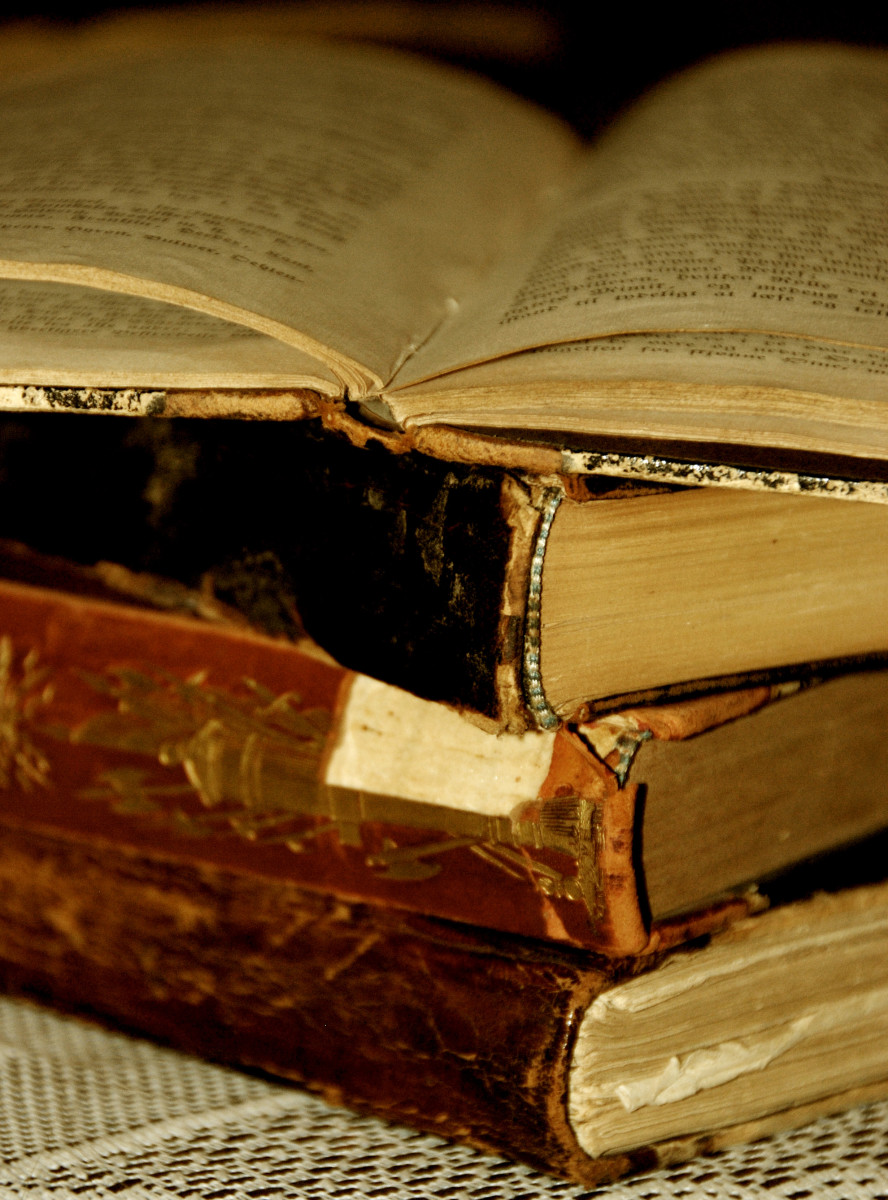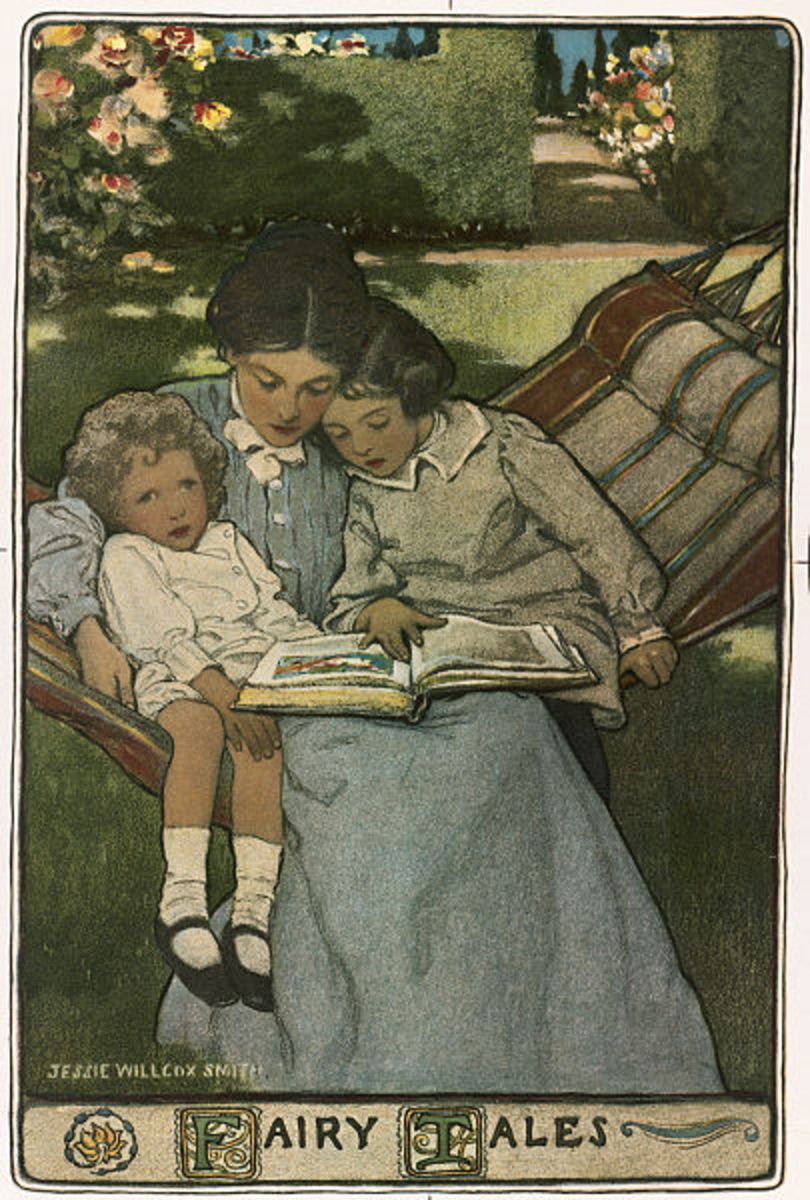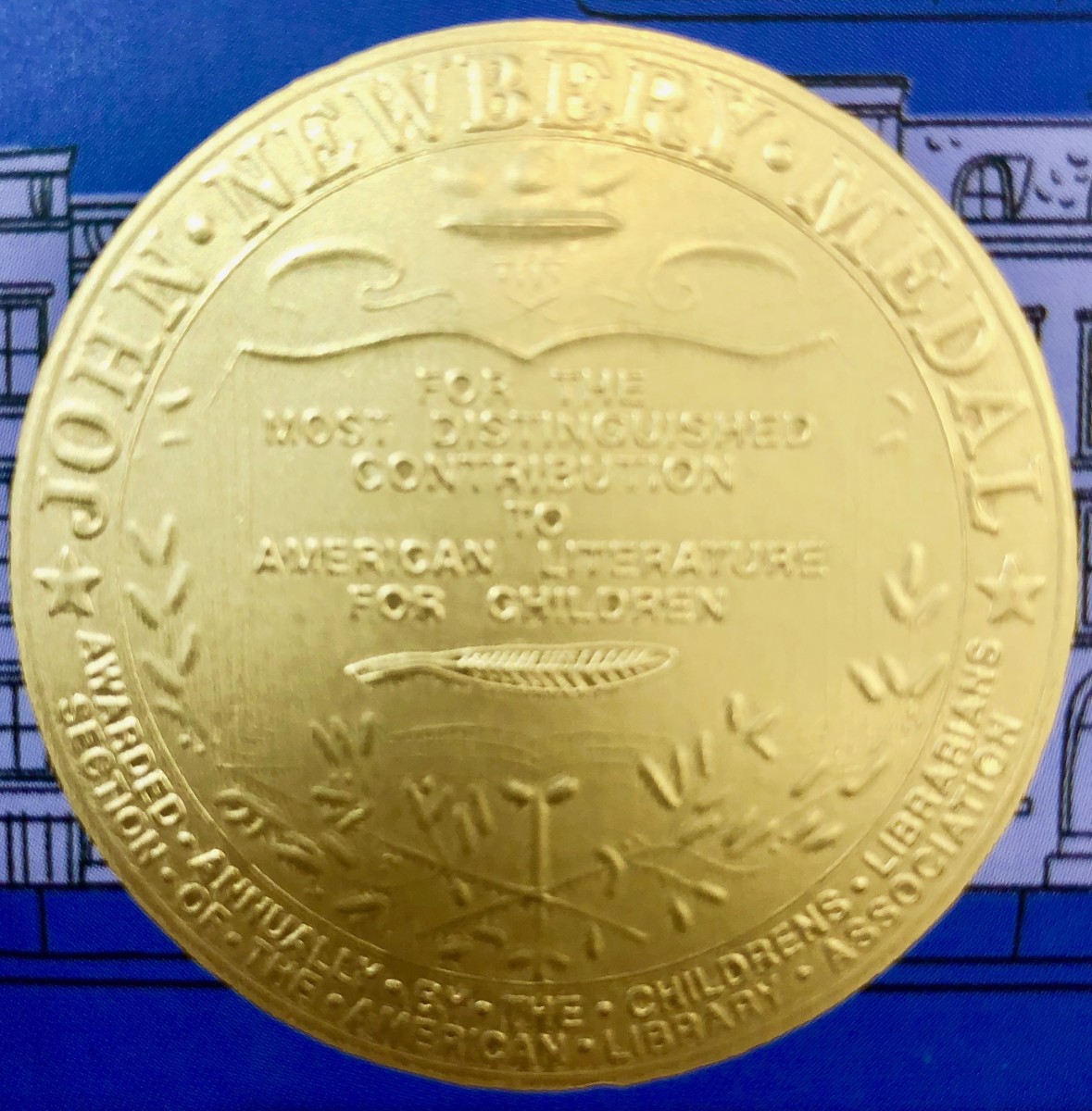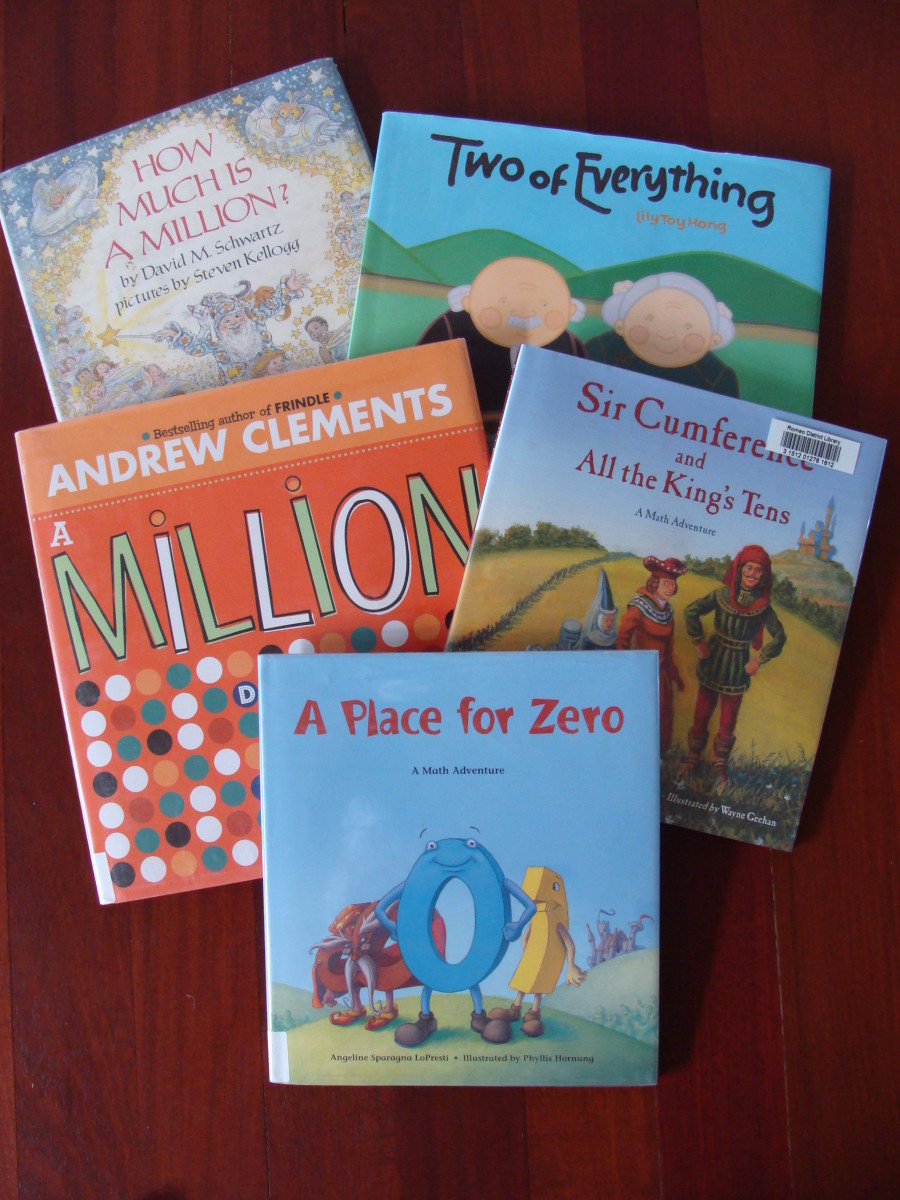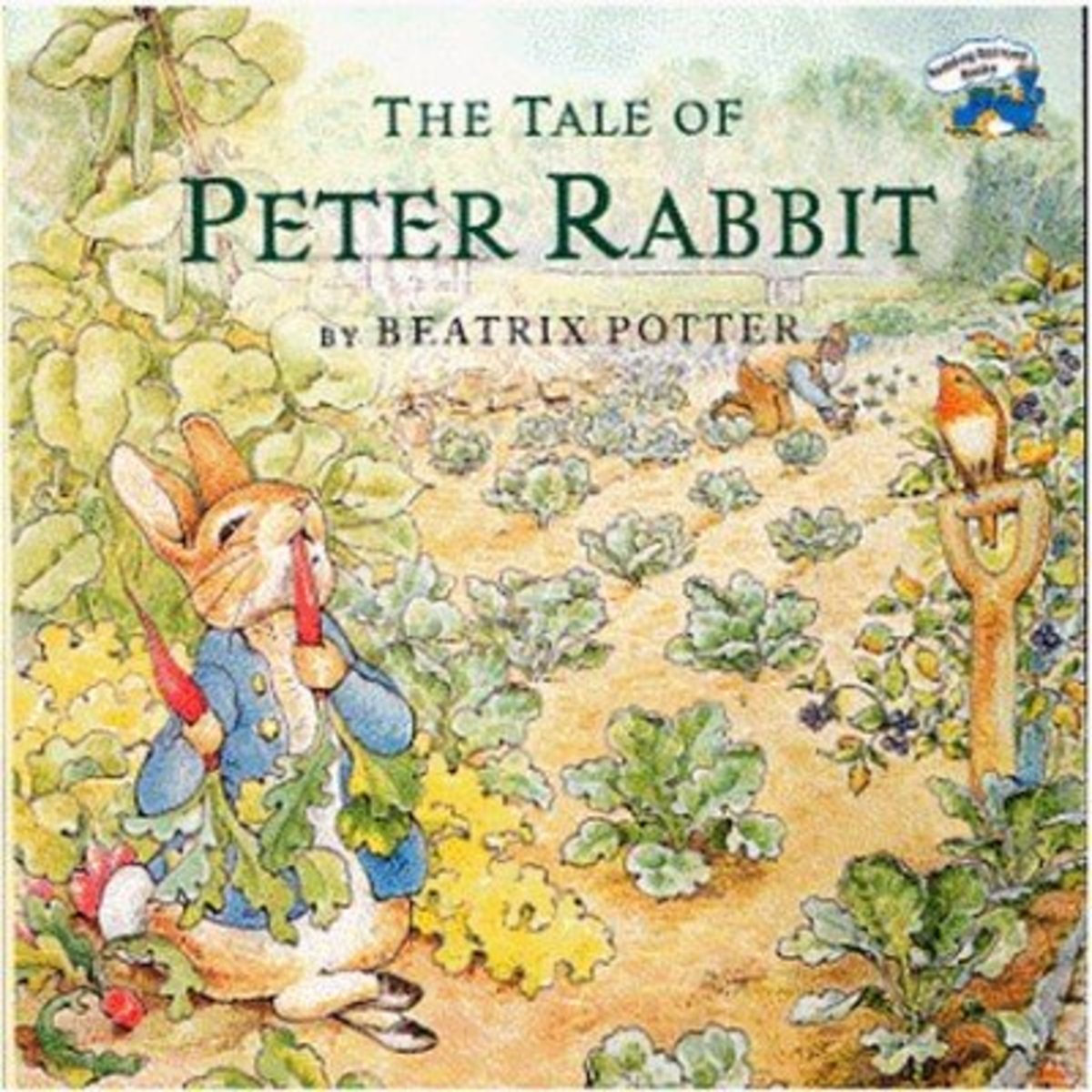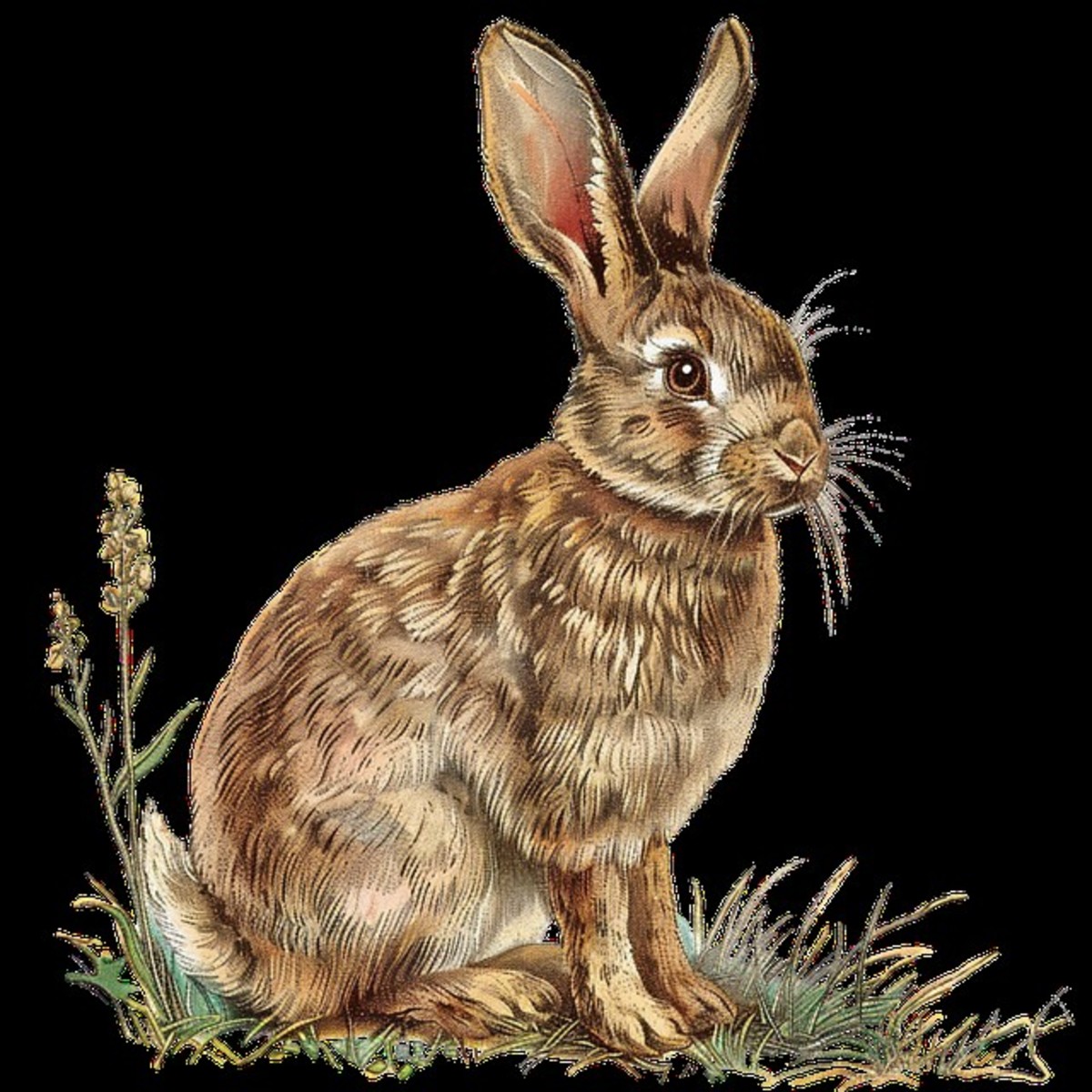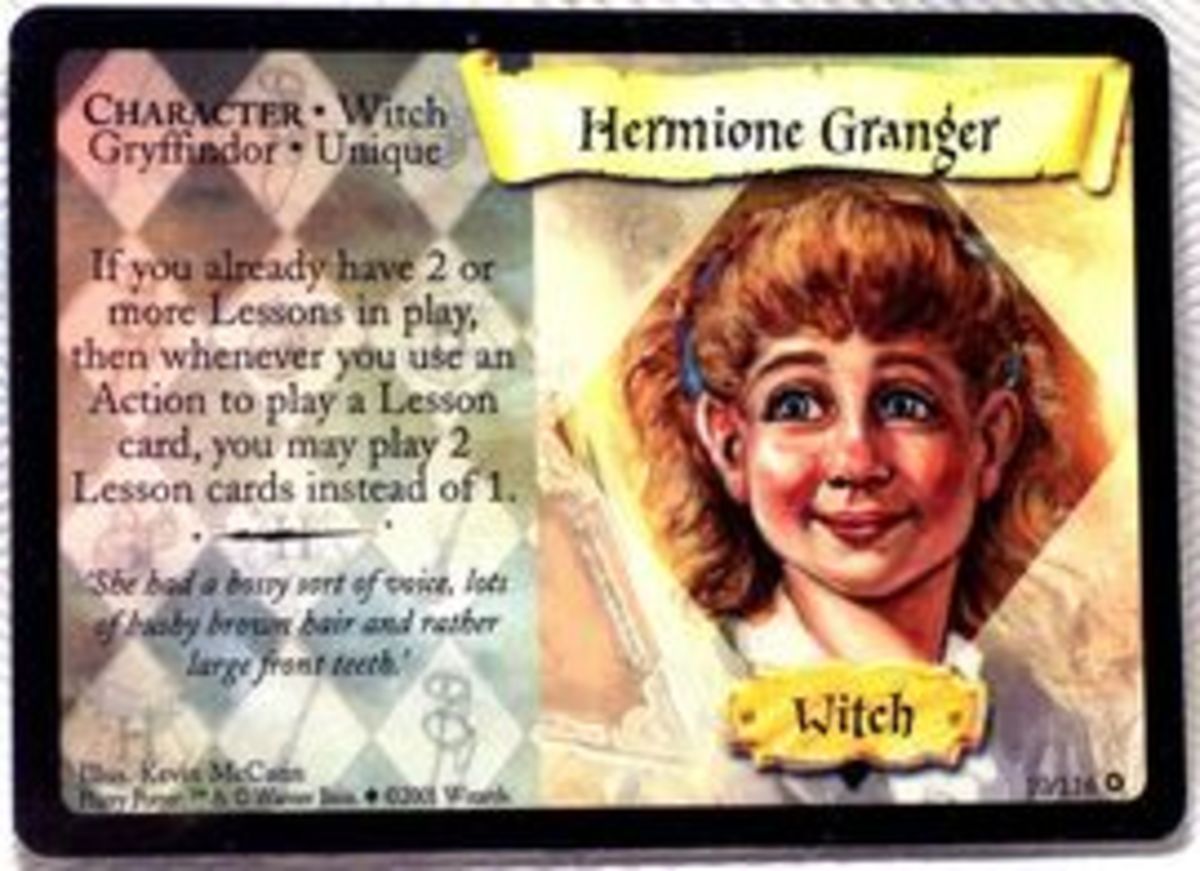Little House in the Big Woods: Supporting Comprehension
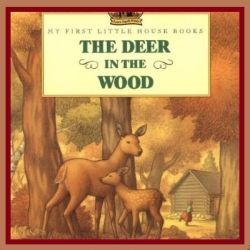
Lesson Plans for Comprehending Text... and Comprehending Time
Why read Laura Ingalls Wilder's Little House in the Big Woods -- and why in the primary grades? Well, first of all, there's the matter of my little niece, who was a second grader last Christmas. We were talking about life 100 years ago (a conversation sparked by a historical doll that she had been given for Christmas). She pondered the world of long ago and said that she didn't think there had been many cell phones back then. Hmmm. She's right as far as that goes, and yet something's missing from her answer...
Children generally get a formal introduction to American history in the intermediate grades. Engaging literature can give them some historical context a few years earlier. Isn't a little younger a little better -- as long as the study is developmentally appropriate?
Secondly, there's the matter of the Common Core. Little House in the Big Woods has been included as a read-aloud for students in the K-1 band. It doesn't mean all children need to hear this particular story, or hear it in its entirety. . It does mean that it's considered an appropriate challenge and can be used as a benchmark if one's own district hasn't put together its own list of comparable benchmark texts. Children may not be ready to decode it at that age, but with support, they can follow the adventures of long-ago little girls who were about their own age. Little House in the Big Woods is the first book in the series -- and little Laura is little indeed.
I have been thinking about how to support comprehension in the primary grades. Here are some lesson plans for Little House in the Big Woods. But first I want to address some of the controversies about this particular work. This is a book that I personally would be inclined to read sections of, but not read in its entirety
Image: Amazon
Visual Imagery: Supporting Comprehension
Visual imagery can be an important comprehension strategy. In most classrooms, children gather on the rug for stories; in some, though, they sit at their desk and draw. Even if the children sit on the carpet, they can be told that they'll be making pictures later - and to try making them in their minds.
Children can listen for visual details and share them later. The teacher can make a chart - and then kids can draw, draw, draw.
Controversies With The Little House Books
Little House in the Big Woods may be less controversial than some other books in the series. In this, the first book in the series, the family stays put and doesn't push westward into those already inhabited lands. There is, however, a place in Chapter 3 where Pa tells a story about his boyhood and talks about pretending he was stalking Indians. So what to do - talk about the passage or leave it out?
Eventually children will read many things. They need the critical literacy skills to evaluate them. But how much? How soon? And how much time to devote to this story? My personal inclination would be to leave out the whole third chapter, "The Long Rifle" as well as. probably, other chapters. (When reading aloud to small children, I mean - I don't suggest physically removing any chapter!)
In many places, children of different races didn't sit down together in classrooms until about 50 years ago. Thus, it can be hard to find stories from previous eras that are devoid of prejudices. Part of critical literacy is looking at whose voice is left out, part is considering those missing voices. If children are reading the book independently in fourth grade, they've hopefully developed some skills in those areas. But if it's being read to first or second graders...
How do you handle the reference?
Native Americans in Children's Literature
What's been left out of the core? I am aware of books with African American protagonists. Are there no Native American protagonists? Here's a list of picture books recommendations compiled by American Indians in Children's Literature.
- Recommendations for Native American Literature
Three recommendations: Jingle Dancer, The Good News Cat, and Sky Sisters.
Little House in the Big Woods Picture Books
There is a series of picture books based on chapters in Little House in the Big Woods. It will give children the same exposure to "long ago' -- perhaps more so because of the rich illustrations. It won't, however, provide the same text complexity.
The picture books begin with an introduction to setting and characters, so they stand lone better than individual chapters in the 'real' book do. Once children know the characters and setting, though, they can listen to chapters in the big Little House book. Some are fairly complete, but for the lack of background information.
I am drawn to them partly because I wouldn't be inclined to read the whole book to first graders, though I do think there's some cool stuff in it.
More Little House in the Big Woods Picture Books
The Story's Setting
Children may want to see the story's real life setting -- Pepin, Wisconsin. (Of course this was filmed in the present tense -- not long ago.)
Difficult Vocabulary in Little House in the Big Woods - Vocabulary Words by Chapter
- solid, guard, fierce, snugly, smoldered, venison, cellar, simmered, lonesome
- creeks, churning, evenly, dodging, kerosene, flickering, shivered,terror, enormous, snuggled
- tempting, whittled, crinkled, scurrying, stalking, twittering, briars
- drifts, banked, crescent, ravine, scolding, snarling, spring, wriggled, switch, pokeberries, mufflers
- gathered, sorrowfully, fidget, motionless, catechism, glittering, samplers, patchwork, solemn, steep, swooping
- thaw, trembling, lantern, faint, snatched, storekeeper, prickled
- smashing, shivering, bundle, cedar, troughs, bonfire, skimmed
- merrily, bugle, pranced, calico, jigging, petticoats, yoke
- leafing, fawn, woodpile, dreadfully, newly, platform, kegs, pebbles, seam, unhitched
- unwound, primly, admired, miserable, pantry, naughty, heifers, hollow, settle, grooves, appearances, deceiving, good-natured
- stump, shelter, stalks, yellow jackets, swarming, bawled, swollen, steeped
- bundled, sumac, pry, molded, hulled, scampering, mass, kernels, stewed
Supporting (Very) Beginning Reading - And Setting the Stage for Comprehension
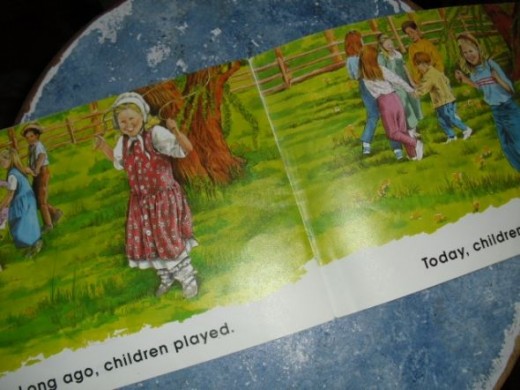
I like this emergent reader, Long Ago and Today. It's patterned in a way that allows even very beginning readers to read on their own. It also reinforces the ideas in read-aloud historical fiction -- hefty books like Little House in the Big Woods.
Some of the 'long ago' illustrations remind me of the Little House books. The illustrator also has taken into account the different races that we see in classrooms. (Some pages have more children of different races.)
Image by the Author
Little House in the Big Woods is the story of some people’s long ago, but it’s not everyone’s long ago. What developmentally appropriate stories give us other pieces of the shared past?
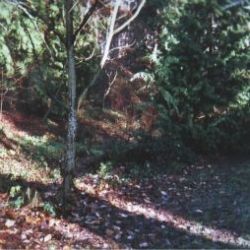
Studying Seasons in the Big Woods
Lesson Plan Ideas
Seasonally, Little House in the Big Woods makes a circle - one whole year living in the woods of Wisconsin.
Children can listen for details about the seasons and make pictures. They could even create a bulletin board or other display to represent each one. Different children could be responsible for drawing and cutting out different things that are found in the woods at that time.
Make a list on chart paper first - it's a good comprehension activity.
Image by the Author
Story Structure: An Artful Ending
The last chapter of Little House in the Big Woods is, I think, masterful. I wasn't enjoying my re-read until I got there. So much in the ending ties back to the beginning -- and some of it even children can catch!
Even primary school children are ready for a discussion of how the book went in a circle. At the beginning, winter was coming. At the end, winter was coming again.
The author does something else that makes the story feel complete. She ends on Pa singing a song about the past, "Auld Land Syne". When Laura asks what the words mean, Pa tells her it means long ago.
Laura reflects on this and thinks how glad she is that it's now. At the very close, she reflects on how now can never be forgotten or become long ago.
This is a good place to do some thinking out loud and some questioning. Is what the narrator says true? Does the author think it's true?
This is also a good place to turn back to the opening chapter and remember how the book started out by telling us the events took place 60 years earlier. I would suggest to children: It could be the author ended the book the way she did because she wanted to get us thinking.
Yes, writers make very deliberate choices when they begin and end books. A mature reader may notice some other things about the ending. Some things are like the opening, yet others have changed. In the first chapter, Laura's dad shoots animals, and the family uses the animals for food (and other things they need). In the last chapter, he goes hunting - or intends to - but three times, he is either filled with empathy or wonderment. He doesn't shoot. In this stiller, softer chapter, the family decides to eat bread and butter for dinner.
He'll be out hunting again - making food and clothing - but it's not how the story ends. Again, the ending can play on our minds. Did Laura Ingalls Wilder intend to leave us reflecting on the book's big ideas?
Here you can see the closing paragraphs set to the haunting tunes of Auld Lang Syne.
More Lesson Plans for Little House in the Big Woods
- C-R-E-A-T-E for Mississipi Reading Activity
Here is an outline for guiding older students in reading the text independently, with major activities arranged by chapter. One of the focuses is integrating technology - Lap Book Lessons Printables
Here are free printables to make a Little House in the Big Woods lapbook. (I like the blackline forest animals.) - Curriki Resources
Curriki is a collborative effort of teachers. There are lesson plans (with comprehension questions and prompts) available for download. - ABC Teach Comprehension Questions
ABC Teach offers comprehension questions and crosswords for Little House in the Big Woods as a free resource. Materials for other Little House books (including the My First Little House series) are available to members only. - Harper Collins Activities
Lots of fun -- from the publisher, Harper Collins.







